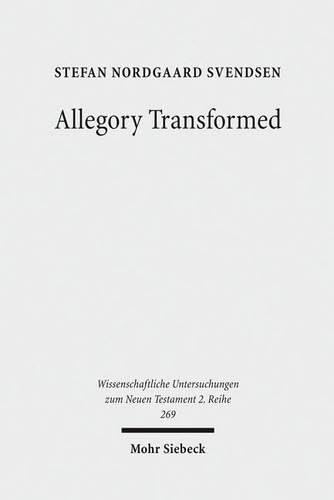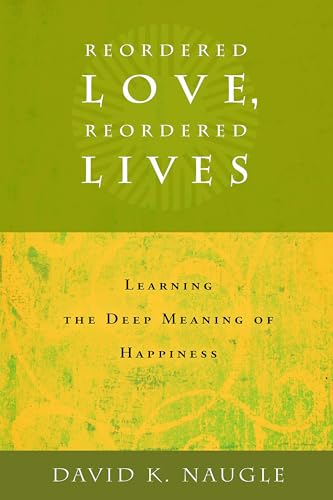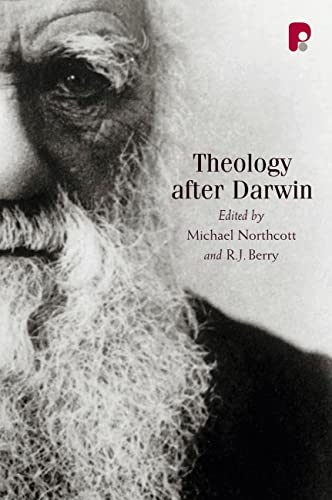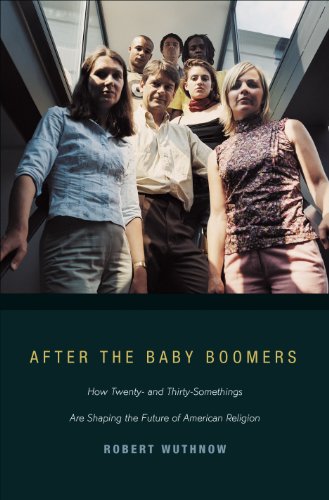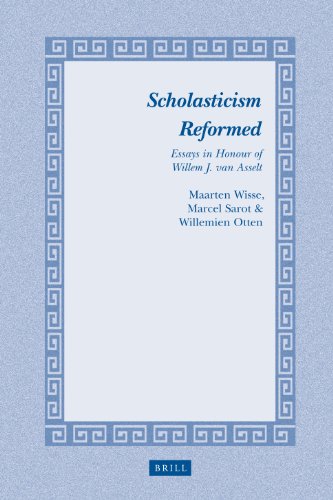Allegory Transformed: The Appropriation of Philonic Hermeneutics in the Letter to the Hebrews
Written by Stefan Nordgaard Svendsen Reviewed By Jared ComptonIn this revised version of his 2007 PhD thesis (University of Copenhagen), Svendsen challenges the communis opinio that the author of Hebrews (AH) and Philo differ, at the least, in the respective hermeneutic each employs. Svendsen insists instead that the difference lies in the ontological theory each used to fund his allegorical exegesis. It was this similarity of approach and different metaphysic that allowed the AH both to identify the allegorical meaning contained in the OT and to contrast this meaning with the text’s literal meaning. Svendsen’s argument for this transformation of Philo’s method proceeds in three steps that correspond to the three major divisions of the monograph.
Part 1 (Allegory, pp. 9–52) situates Philo’s interpretive approach in its historical context. It is the Jewish allegorists of Alexandria (pseudo-Aristeas and Aristobulus), not the Stoics, with whom Philo shares the most in common (pp. 9–28). For these, both the literal and allegorical meaning are true (p. 14), and a text’s author intends both (pp. 9, 24). Where Philo differs from this tradition, however, is that his approach is grounded in a “comprehensive ontological theory” (pp. 29–52). This theory is shaped, on the one hand, by Platonic metaphysical dualism (i.e., the distinction between a transcendent realm and its “sense-perceptible copy,” the immanent realm) and, on the other, by a Stoic-like insistence that this dualism is not absolute. For Philo, in fact, the logos bonds both realms together. What this means for his hermeneutic is that a text’s literal meaning corresponds with the immanent realm, while its allegorical meaning corresponds with the transcendent realm. Moreover, the allegorical meaning is “laid up” in the literal meaning, just as the transcendent realm is a “template” for (and is, not least, bonded to) the immanent realm.
Part 2 (Preliminaries, pp. 55–80) describes the relationship between Philo’s metaphysic and Jewish apocalypticism and suggests the relationship of the AH to each. Like Philo, the AH and Jewish apocalypticism distinguish between transcendent and immanent realms. Unlike Philo, however, the AH and Jewish apocalypticism also suggest that the transcendent realm materially exists and that its transcendence is both vertical and temporal. (One may wonder whether Philo’s Rewards 165f. softly points against this contrast.) Moreover, for each, the metaphysical dualism serves a hermeneutical function. However, unlike Philo, the AH and Jewish apocalpyticism use the dualism to contrast the two realms (though see pp. 40–41, 186). It is this final point that explains Svendsen’s title (“Allegory Transformed”) and the purpose of the letter (pp. 69–80). By negatively portraying the literal meaning of the Mosaic Law, the AH hopes to dissuade his audience from seeking asylum from Roman harassment in the status given to Torah-observers (cf. p. 247).
Part 3 (Exegesis, pp. 83–248) supports both Svendsen’s claim about the AH’s hermeneutic and its purpose. He supports the first by comparing the way the AH and Philo talk about three of Judaism’s central identity markers: the Promised Land, the tabernacle, and the priesthood (pp. 83–195). He supports the second by looking at the exhortatory material in Heb 10:19–13:25 (pp. 196–245).
The Promised Land is the first identity marker discussed (pp. 107–20). Svendsen says that when the AH distinguishes between God’s rest and the Land in 3:7–4:11 he acknowledges that the Land was a symbol for rest (i.e., salvation). Something similar can be found in Philo. However, unlike Philo, the AH views the Land as only a symbol; that is, unlike Philo, “the essence of the allegorical correlate is absent” (p. 118).
The priesthood is the second identity marker discussed (pp. 130–58; 168–71; 176–80; 182–95). In this case, the AH links Jesus’ priesthood with Melchizedek’s (ostensibly) transcendent priesthood (7:1–10; cf. 5:6, 10). Svendsen argues that this allows the AH to suggest not only the inferiority of the Levitical qua earthly (high) priesthood (7:8, 11–28; 8:5–6; 9:11–14, 25–28; 10:1–18), but, more fundamentally, the inadequacy of the law (or, covenant) it served (7:11–19, 28; 8:6–13; 9:8–10, 15–24; cf. 10:16–18). Philo conceives of the priesthood rather differently. For Philo, the Jewish high priest, while part of the immanent realm, nevertheless manifests the logos par excellence, the transcendent high priest.
The tabernacle is the final identity marker discussed (pp. 158–68; 171–76; 180–82). For the AH, the tabernacle is, according to Exod 25:40, an earthly copy of its transcendent counterpart (8:1–6). Svendsen notes that much the same could be said for Philo. However, unlike Philo, the AH insists that the tabernacle was only a copy, whereas Philo maintains it is a perfect copy. The AH’s contrast allows him to underscore, once again, the inferiority of the old covenant and its tent and, simultaneously, to highlight the superiority of the new covenant Jesus mediates from his heavenly tent.
Svendsen concludes his study by exegeting 10:19–13:25 to support his hypothesis about the letter’s purpose. As such, the sin that 10:26–31 warns against is adhering to the now-abrogated law. Such adherence might avert persecution (considering the disparate legal statuses of Judaism and Christianity in the first-century), but it would have disastrous results. Only perseverance in their Christian confession would provide ultimate safety (i.e., salvation; vv. 32–39; cf. vv. 19–25). To spur them on, the AH adduces several examples of heroic perseverance (11:1–12:3) and reflects on the divine purpose behind Christian suffering (12:4–11). The rhetorical climax, however, comes in 13:7–16, with 13:9 revealing the AH’s “central concern” (p. 239). Only those who forsake Torah-observance will gain access to the world to come.
Here there is space for only a handful of critical remarks. For starters, it is not sufficiently clear that the AH and Jewish apocalypticism share a similar metaphysic. While both may contrast the transcendent and immanent realms, it is only the AH whose criticism turns primarily on a temporal axis. He views the immanent negatively most often because it is now old. What else are we to make of his a fortiori arguments throughout (see esp. 2:1–4; 10:28–29) or his frequent use of better, not simply good (1:4; 7:7, 19, 22; 8:6 [2×]; 9:23; 10:34; 11:16, 25, 40; 12:24; also 6:9; cf. esp. pp. 178–79), to say nothing of the fact that the speaker of both the old and new words is God (e.g., 1:1)? One also wonders whether the AH’s association of the new age with heavenly realities adequately proves Svendsen’s claim that he “assumed Philo’s hermeneutical method” (p. 60), not least considering all the qualifications Svendsen makes (e.g., temporal dualism, non-noetic Abbilder, non-Middle Platonic metaphysic). Perhaps Svendsen has too quickly made typology a species of allegory, when, in fact, the two really are separate genera.
Here there is space for only a handful of critical remarks. For starters, it is not sufficiently clear that the AH and Jewish apocalypticism share a similar metaphysic. While both may contrast the transcendent and immanent realms, it is only the AH whose criticism turns primarily on a temporal axis. He views the immanent negatively most often because it is now old. What else are we to make of his a fortiori arguments throughout (see esp. 2:1–4; 10:28–29) or his frequent use of better, not simply good (1:4; 7:7, 19, 22; 8:6 [2×]; 9:23; 10:34; 11:16, 25, 40; 12:24; also 6:9; cf. esp. pp. 178–79), to say nothing of the fact that the speaker of both the old and new words is God (e.g., 1:1)? One also wonders whether the AH’s association of the new age with heavenly realities adequately proves Svendsen’s claim that he “assumed Philo’s hermeneutical method” (p. 60), not least considering all the qualifications Svendsen makes (e.g., temporal dualism, non-noetic Abbilder, non-Middle Platonic metaphysic). Perhaps Svendsen has too quickly made typology a species of allegory, when, in fact, the two really are separate genera.
This observation leads to one further criticism. Svendsen never gets around to discussing how Philo moves from one level of meaning to the other. In other words, that Philo reads, e.g., Gen 12:6 as depicting a soul’s pursuit of wisdom is plain (p. 116; cf. Migration 216); why, however, is not. Though Svendsen nowhere says as much, this seems to be one more difference between Philo and the AH. While Svendsen insists that Philo’s allegorical sense was bound up with the literal sense and that both pointed to universal truth, it is not at all clear how Philo knew which truth to find in which text. Therefore, while Philo may have rescued the literal sense from charges of capriciousness (see p. 50), it is doubtful that the same could be said for the allegorical sense he inferred. On the contrary, something slightly different takes place in Hebrews. There the AH treats the “secondary” meaning as nothing more than direct implications drawn from the literal sense of the OT (see esp. 2:8; 4:7–8; 7:11; 8:13; 9:8), something G. B. Caird called the “self-confessed inadequacy” of the old order. Moreover, for the AH, these implications are themselves corroborated by new revelation in the form of historical acts (i.e., Jesus’ death and resurrection/exaltation). Once again, the transformation appears more extensive than Svendsen realizes, his scattered comments about the AH’s strained exegesis notwithstanding (see, e.g., pp. 95, 111–12, 123, 144, 151–52, 195 [!]; though cf. pp. 187–88).
Jared Compton
Jared Compton is associate professor of New Testament and Biblical Theology at Bethlehem College & Seminary in Minneapolis, Minnesota.
Other Articles in this Issue
Most of us, I suspect, develop fairly standard ways, one might even say repetitive ways, to appeal to the motivations of our hearers when we preach the gospel...
How to Write—and How Not to Write—A Review: An Appreciative Response to Reviews of Ancient Near Eastern Themes in Biblical Theology by Dempster and Edgar
by Jeffrey J. NiehausI want to thank Themelios for the unusual opportunity to interact with two reviewers of my book Ancient Near Eastern Themes in Biblical Theology...
Parallels, Real or Imagined? A Review Article of Jeffrey J. Niehaus, Ancient Near Eastern Themes in Biblical Theology
by William EdgarWhen I came to Westminster Theological Seminary in Philadelphia as a young student in the 1960s, two things struck me...
Why Evangelicals Should Ignore Brian McLaren: How the New Testament Requires Evangelicals to Render a Judgment on the Moral Status of Homosexuality
by Denny BurkIn 2006 on Christianity Today’s leadership blog, Pastor Brian McLaren urged evangelical leaders to find a “Pastoral Response” to their parishioners on the issue of homosexuality...
A Member of the Family or a Stranger? A Review Article of Jeffrey J. Niehaus, Ancient Near Eastern
by Stephen DempsterWe cannot overstate how important knowing the context is for understanding the significance of any communication, whether that is a simple word, sentence, paragraph, larger text, sign, photograph, or cultural cue...


